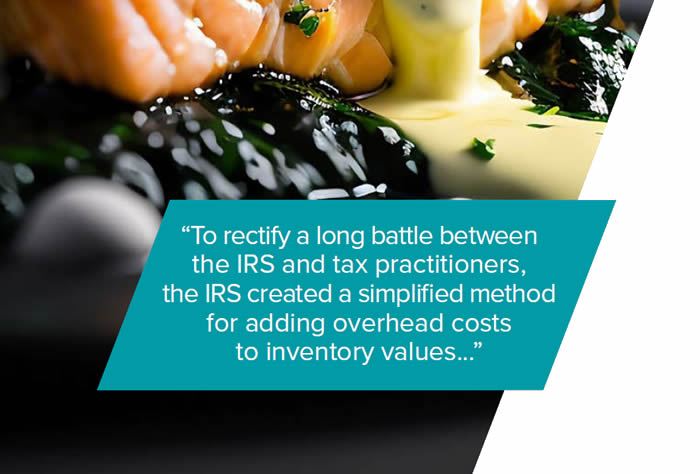From Depreciation to Discounts: Understanding Book-Tax Differences in the Food & Beverage Industry
By Louis Biscotti, National Leader, Food & Beverage Services Group
Determining how to treat particular items from a GAAP (generally accepted accounting principles) standpoint versus from a tax standpoint can drive CFOs crazy. The differences are substantial enough that there is no simple way of taking a company’s book (GAAP) income and using it as the starting point for the Company’s tax return.
With respect to depreciation, tax laws allow for accelerated write-offs, bonus depreciation, and cost segregation studies, while GAAP requires assets to be depreciated over their economically useful life. This results in larger deductions for tax purposes than those recorded on the books, and while those deductions will ultimately reverse to arrive at the same point, the year-by-year differences can be significant and must be analyzed during tax planning.
While most recognize depreciation differences, there are many others. This article will address some of the more common book-tax differences to be aware of.
Inventory Costs
Both GAAP and tax laws require that companies capitalize (add-in) overhead costs (such as rent, utilities, supervision labor, etc.) to the inventory costs of purchasing and manufacturing products. To rectify a long battle between the IRS and tax practitioners, the IRS created a simplified method for adding overhead costs to inventory values, which differs significantly from GAAP. Under recent tax laws, companies with average revenues under $27 million (adjusted annually for inflation) are exempt from this methodology, further complicating the situation. As with all book-tax differences, they must be analyzed and tracked every year and taken into consideration for tax planning purposes.

Small Wares for Restaurants and Other Food Service Companies
While GAAP requires assets with a longer useful life to be capitalized and depreciated over their useful life, the tax laws recognize that small wares (purchased often and utilized quickly) may be immediately written off as an expense.
Sales of Gift Cards
For cash basis taxpayers, the income from the sale of gift cards is taxable in the year of receipt. For accrual-basis taxpayers, the revenue from the sale of gift cards can be deferred to the following tax year provided that the cards are not redeemed in the current year, and such income is deferred beyond the current year for book purposes on an “applicable financial statement” (AFS). For book purposes, the revenue is deferred until it is earned. Companies can elect a method to minimize these differences.
Package design costs
Companies spend enormous amounts on packaging. There are three alternative methods of accounting for package design costs:
- Capitalization;
- Design-by-design capitalization and 60-month amortization; and
- Pool-of-cost capitalization and 48-month amortization.
Companies can indicate the year the packaging was created on the food or beverage label. This allows for immediate write-off of any remaining capitalized costs when new packaging is designed or labels are altered.
Cash Versus Accrual Method of Accounting for Businesses with Under $27 million of Revenue (Adjusted Annually for Inflation)
The cash method of accounting allows for the write-off of all expenses when paid and only when paid, while revenue is recognized only when received and not when earned. Even manufacturers, distributors, and producers, which historically were required to use the accrual method for the tax to account for inventories, may use the cash method of accounting provided their three-year average of gross revenue is less than $27M. Careful planning must be utilized with the cash method, as any decrease in sales may result in unintended consequences.
Accrued Bonus, Vacation, Sick, and Severance Pay
GAAP requires accruals for bonuses, vacation, sick, and severance pay earned by employees at the end of any given year and unpaid. The tax law only allows for current-year deductions of these accrued amounts if paid within 2 ½ months after year-end.
Prepaid Goods and Services
Companies often prepay for the cost of services and goods (e.g., prepaid advertising, prepaid professional fees, prepaid postage, etc.). For GAAP, these costs are capitalized and written off as expenses as the services are rendered, or the goods are consumed. These costs may be immediately written off for tax purposes if services are rendered within 3 ½ months of payment. Other prepaids, such as insurance or interest, may be deducted in the current year if paid within 8½ months of year-end.
Allowances for Discounts, Returns, or Promotions
GAAP requires that reasonable allowances be established for any sales returns or discounts earned during a given year, while the tax code only allows for write-offs when actually paid. More importantly, companies must establish allowances for promotions and other types of incentives according to GAAP but may not deduct them for tax purposes until paid.
Allowances for Doubtful Accounts Receivable
GAAP requires reasonable allowances for estimated uncollectible accounts receivable, while the tax code generally only allows a deduction when the account receivable is totally written off.
While this article has identified some of the more common book-tax differences for food and beverage companies, there are specific procedures, elections, and planning techniques that can be followed for each difference, and your tax professional should be consulted on how to best plan for utilizing these methods properly to maximize your tax savings.





















